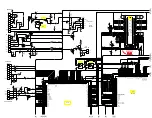
Thor VM2 with with Microsoft Windows Embedded CE 6.0 User Guide
137
App Note
All applications to be installed into persistent memory must be in the form of Windows
CE CAB files. These CAB files exist as separate files from the main installation image,
and are copied to the CE device using ActiveSync, or using removable media such as a
USB drive. The CAB files are copied from into the folder System, which is the persistent
storage virtual drive. Then, information is added to the registry, if desired, to make the
CAB file auto-launch at startup.
The registry information needed is under the key HKEY_LOCAL_MACHINE \ Software \
HSM \ Persist, as follows. The main subkey is any text, and is a description of the file.
Then four mandatory values are added:
FileName is the name of the CAB file, with the path (usually \System).
Installed is a DWORD value of 0, which changes to 1 once auto-launch installs the file.
FileCheck is the name of a file to look for to determine if the CAB file is installed. This
will be the name of one of the files (with path) installed by the CAB file. Since the CAB
file installs into DRAM, when memory is lost this file is lost, and the CAB file must be
reinstalled.
Order is used to force a sequence of events. Order=0 is first, and Order=99 is last. Order
must be greater than 4 for the Thor VM2. Two items which have the same order will be
installed in the same pass, but not in a predictable sequence.
There are two optional fields that may be added:
1. Delay is used to add a delay after the item is loaded, before the next is loaded. The
delay is given in seconds, and defaults to 0 if not specified. If the install fails (or the
file to be installed is not found), the delay does not occur.
2. PCMCIA is used to indicate that the file (usually a CAB file) being loaded is a radio
driver, and the PCMCIA slots should be started after this file is loaded. By default,
the PCMCIA slots are off on powerup, to prevent the “Unidentified PCMCIA Slot”
dialog from appearing. Once the drivers are loaded, the slot can be turned on. The
value in the PCMCIA field is a DWORD, representing the number of seconds to wait
after installing the CAB file, but before activating the slot (a latency to allow the
thread loading the driver to finish installation). The default value of 0 means the slot
is not powered on. The default values for the default radio drivers (listed below) is 1,
meaning one second elapses between the CAB file loading and the slot powering up.
The auto-launch process proceeds as follows:
1. The launch utility opens the registry database and reads the list of CAB files to auto-
launch.
2. First it looks for FileName to see if the CAB file is present. If not, the registry entry is
ignored. If it is present, and the Installed flag is not set, auto-launch makes a copy of
the CAB file (since it gets deleted by installation), and runs the Microsoft utility
WCELOAD to install it.
3. If the Installed flag is set, auto-launch looks for the FileCheck file. If it is present, the
CAB file is installed, and that registry entry is complete. If the FileCheck file is not
present, memory has been lost, and the utility calls WCELOAD to reinstall the CAB
file.
Summary of Contents for Thor VM2
Page 1: ...User Guide Thor VM2 Vehicle Mounted Computer with Microsoft Windows Embedded CE 6 0 ...
Page 16: ...4 Thor VM2 with with Microsoft Windows Embedded CE 6 0 User Guide ...
Page 63: ...Thor VM2 with with Microsoft Windows Embedded CE 6 0 User Guide 51 ...
Page 64: ...52 Thor VM2 with with Microsoft Windows Embedded CE 6 0 User Guide ...
Page 288: ...276 Thor VM2 with with Microsoft Windows Embedded CE 6 0 User Guide ...
Page 310: ...298 Thor VM2 with with Microsoft Windows Embedded CE 6 0 User Guide ...
Page 352: ...340 Thor VM2 with with Microsoft Windows Embedded CE 6 0 User Guide ...
Page 385: ...Thor VM2 with with Microsoft Windows Embedded CE 6 0 User Guide 373 Hat Encoding ...
Page 398: ... Honeywell 9680 Old Bailes Road Fort Mill SC 29707 www honeywellaidc com VM2 CE UG Rev D 9 17 ...
















































